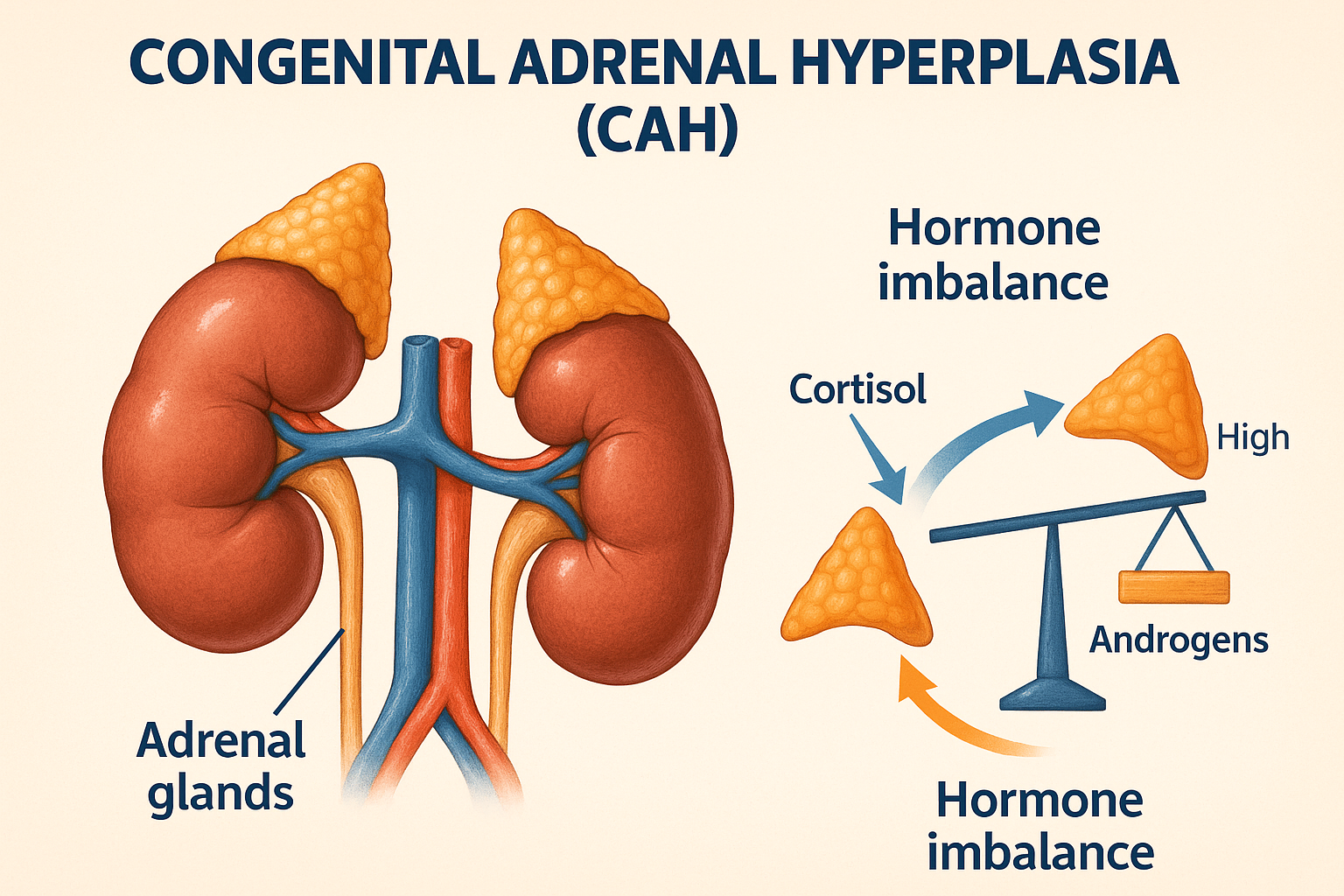Understanding the Types of CAH
There are two main types of Congenital Adrenal Hyperplasia:
-
Classic CAH: This severe form is typically detected at birth or in early infancy. Symptoms may include salt-wasting crises (life-threatening dehydration, low blood pressure), ambiguous genitalia in girls, and signs of androgen excess in both sexes—such as deep voice, early pubic hair, and rapid childhood growth with short adult height.
-
Nonclassic CAH: Milder and often undiagnosed until adolescence or adulthood, this form may cause symptoms such as excess facial/body hair, severe acne, irregular periods, and reduced fertility. In many cases, individuals may remain undiagnosed until fertility issues arise.
How CAH Affects Reproductive Health and Fertility
Female Fertility
Women with CAH may struggle with irregular menstrual cycles, chronic anovulation (lack of ovulation), and elevated androgen levels that impair conception. Symptoms such as hirsutism (excess body hair) or virilization can also impact self-image and intimacy. In severe cases, early surgical interventions may be necessary for genital reconstruction.
Despite these challenges, many women with CAH can conceive, especially when supported by tailored medical interventions. These include:
-
Hormone replacement therapy to regulate ovulation and balance androgen levels
-
In vitro fertilization (IVF) for those with more significant barriers
-
Multidisciplinary care involving endocrinologists and fertility specialists
Personal experiences show that emotional support and community connection are equally important during the family-planning journey.
Male Fertility
Although less frequently discussed, men with CAH can also face reduced fertility. Elevated adrenal androgens may suppress the body’s natural hormone signals that regulate sperm production. Some males experience early puberty and underdeveloped testicular function in adulthood.
Treatment options include:
-
Gonadotropin therapy to stimulate natural sperm production
-
Surgical sperm retrieval + IVF for severe cases
-
Early reproductive health screening and counseling to manage expectations and treatment planning
Long-Term Risks of Untreated CAH
Without diagnosis and ongoing care, classic CAH may cause adrenal crisis—a medical emergency marked by vomiting, hypoglycemia, and hypotension. Over time, unmanaged CAH can impair growth, delay sexual development, and increase psychological distress due to visible physical changes or social stigma.
Psychological effects—especially in adolescents—can include anxiety, depression, or identity-related struggles due to early puberty or body differences. Recognizing these invisible burdens is crucial to providing truly holistic care.

How Is CAH Diagnosed and Managed?
Diagnosis
Most countries include CAH in their newborn screening programs. When suspected, confirmation is done through:
-
Blood hormone tests (e.g., 17-hydroxyprogesterone)
-
Genetic testing to identify enzyme deficiencies
-
Imaging studies when internal anatomy is unclear
Treatment Approach
-
Glucocorticoids (like hydrocortisone) replace missing cortisol and suppress excess androgen production
-
Mineralocorticoids (e.g., fludrocortisone) manage salt levels in salt-wasting forms
-
Stress dosing protocols during illness, surgery, or pregnancy
-
Regular endocrinology check-ups to monitor growth, development, and medication effectiveness
Surgical correction of genital ambiguity may be considered in infancy or postponed until adolescence/adulthood depending on cultural, ethical, and medical considerations.
Modern research is now exploring steroid-sparing therapies and precision medicine to reduce long-term steroid side effects while maintaining hormone balance.
Living Well With CAH: Real Stories and Support
People with CAH often live full lives—with the right treatment, they can pursue education, careers, relationships, and parenthood. Real-life stories reflect resilience: from women conceiving after fertility treatment, to men becoming fathers via IVF, to children growing up confident despite early diagnosis.
Emotional support, access to specialists, and advocacy networks are vital. Connecting with others on the same journey fosters a sense of community, understanding, and hope.

